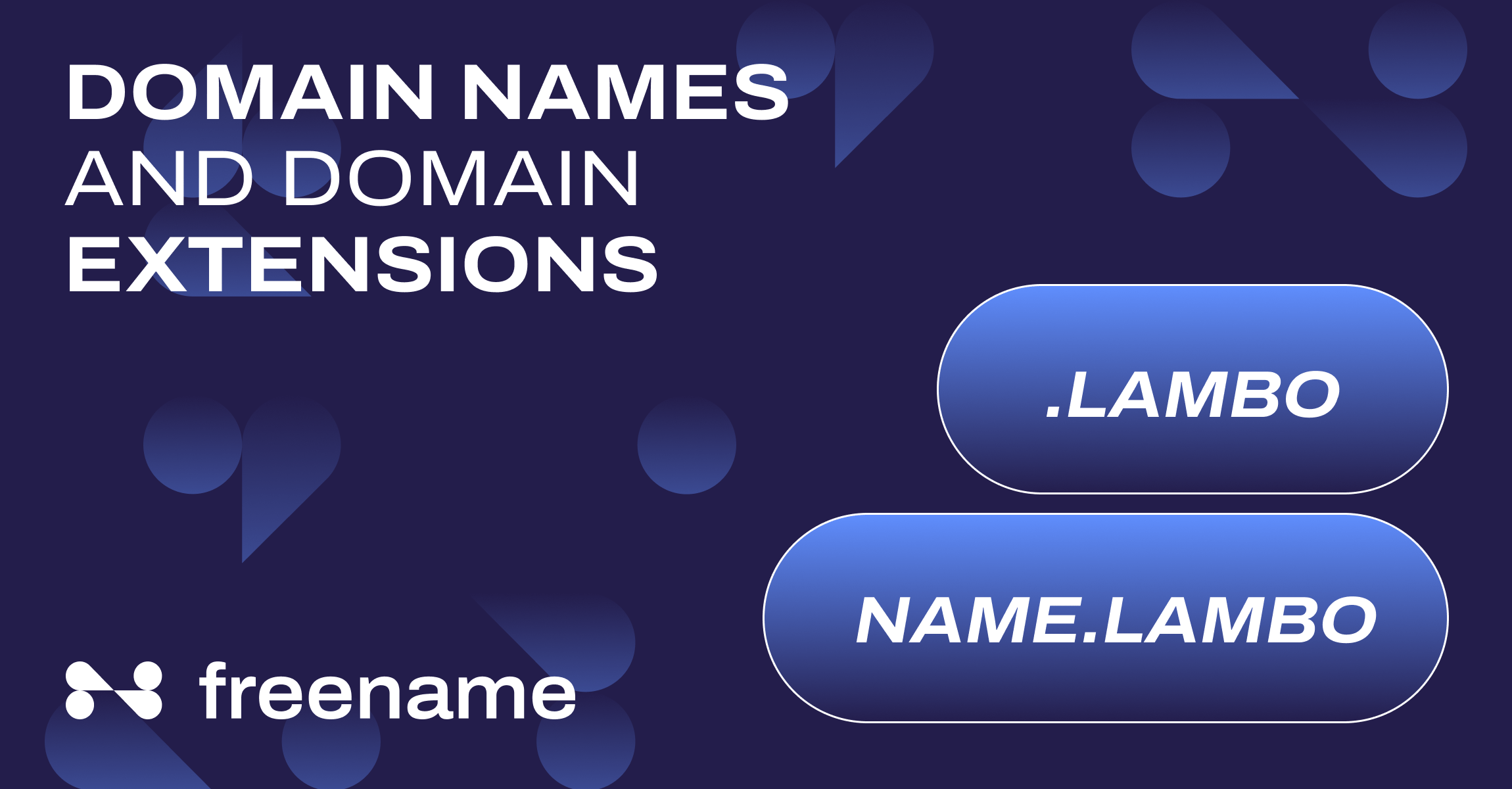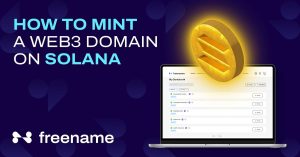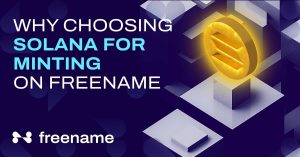Understanding Domain Names and Domain Extensions
Understanding domain names and domain extensions might seem rocket science, but it isn’t. Break them down into two parts of a web address, just like you would when splitting up a home address into street name and city.
For example, ‘xyz’ is your domain name in the web address www.xyz.com, which is analogous to the street name in an address. Your domain extension is “.com,” which serves as the city in your address. Together, these makeup what is referred to as a website’s URL.
Having understood the basic concepts of both domain names and domain extensions, we will now proceed to explain various types of domain extensions, how you can choose a good name for your business, and their future trends.
What is a domain name?
A website’s domain name is the name people use while searching for it on the Internet. Choosing a domain name for your website is an important step that requires careful consideration. You need a short, memorable, easy-to-type domain name, and certain guidelines must be followed when selecting the right one for your site.
This means that domain names should not contain numbers, spaces, or hyphens. Such elements make it hard for users to remember and type a domain name correctly. Additionally, in order not to be accused of violating someone else’s trademark or copyright rules, the domain name must be more than just a variation on another existing one.
By following these simple guidelines, you can create a domain name that draws visitors to your website and reduces your bounce rate.
What are domain extensions?
So we know what URL stands for. The domain extension is the part after the dot (.) when dividing the URL. For example, in www.xyz.com, .com is its domain extension.
Depending on the origin, use, or kind of website, there might be different domain name extensions. Many kinds of domain extensions are categorized based on what they do and how they are used. To select an appropriate one for your site among all available varieties, you need to understand their main types well enough. They have advantages and disadvantages, as we will see with some examples below.
Five Types of Domain Extension
- Generic top-level domains (gTLDs)
These are the most commonly used domain extensions and the most popular type of domain extension. Some examples are .com, .net, .org.
- Pros: Universally recognized and builds trust
- Cons: Limited availability and lack of distinctiveness for specific niches.
2. Sponsored top-level domains (sTLDs)
Sponsored top-level domains can only be used by certain organizations and groups. There are restrictions as to who can use these top-level domains. The most common sponsored top-level domains include:
- Aero (aviation industry)
- .gov (government)
- .edu (educational institutions)
- .coop (cooperatives)
- .museum (museums)
- .mil (military)
- Pros: Show that this site is about a particular community to build trust.
- Cons: These business types do not work everywhere.
3. Country code top-level domains (ccTLDs)
These domain extensions are reserved for countries. These are two-letter domain extensions representing the initials of countries and territories. For example, A bakery based solely in France might choose “bakery.fr” to cater to its local customer base.
- .us (United States)
- .uk (United Kingdom)
- .in (India)
- .au (Australia)
- .ca (Canada)
- Pros: If your business has a strong geographic focus, directing your marketing efforts at a specific region or establishing a physical presence in it may be advantageous.
- Cons: It does not work for global scenarios.
There are more than 250 registered country-code top-level domains at present.
4. Brand top-level domains
The best-known brands have domain extensions, which means that they do not have to use generic top-level domains but a domain extension of their brand name, like Apple, BMW, or Google.
- Pros: This creates an original and brandable online presence that promotes brand recognition.
- Cons: A complex and costly process normally reserved for big corporations having substantial resources. Smaller firms can’t afford such an option.
5. Generic restricted domain extensions
Only businesses with specific purposes are allowed to register generic restricted domain extensions. For example, the .name and the .pro, among others, represent some of these types of domain names.
- Pros: They show legitimacy as well as purpose in the professions or uses associated with them.
- Cons: There is limited availability; hence, one must provide additional documentation for verification purposes.
How to Choose a Domain Extension for your Website?
The success of your online presence depends on picking out a great domain name. But what about selecting that perfect business-fitting URL? The secret lies in these few steps:
- Explore Top-Level Domains (TLDs): Research TLDs that align with your website’s goals, such as .com, .org, or .net, to find options that suit your website’s purpose.
- Brainstorm Names for Domains: List down domain names that represent your brand and resonate with your target audience.
- Check Availability: Use domain-checking tools to verify the availability and relevance of your preferred domain names. Ensure your chosen name is unique, stands out in the digital crowd, and does not violate copyright claims.
- Evaluate Domain Name Extensions: Explore the pros and cons of different domain extensions. Consider how each aligns with your brand identity and overall goals. Refer to the “Types of Domain Extensions” section to know the pros and cons of various domain extensions.
How to Choose a Powerful Domain Name for Your Website?
Picking the perfect domain name could mark the beginning of your presence on the internet.
Below is what you need to consider:
- Brandability: How can you ensure your domain name easily tells people about its brand? In addition, it should be easy to say, remember and spell. When considering a domain name, think of how it would sound when spoken aloud. Would it stick in your mind and be easy to find online? If yes, you have a knack for finding the correct domains.
- Memorable: Short and simple will make your domain name stay at the back of people’s minds. On the other hand, long ones are usually difficult to recall or puzzling.
- Keywords (lightly): Although not a magic SEO wand, adding relevant keywords to your domain name may boost SEO. Nevertheless, avoid overloading your website’s domain with keywords; this may bring more harm than good.
- Availability Check: It is not prudent to wait until you finish brainstorming sessions before checking the availability of domain names. You can use tools like Google Domains or Namecheap to check for a desired name.
These are some strong examples of perfect domain names:
- Amazon.com: This simple yet catchy moniker perfectly defines one of today’s largest online shopping platforms.
- Instagram.com: Another short and brandable name that is memorable and easy to remember.
- Shopify.com: This domain name’s clever use of wordplay makes it unique and distinctive.
How to register a domain name and domain extension?
Registering a domain name is important to launch your brand and attract visitors to your website.
Domain registrars such as GoDaddy, Google Domains, and Bluehost, among others, must be approached by you if you want to register a domain. Such registrars allow you to register and even check if your desired domain name is available. Most come with additional features like web hosting, SSL certificates, and encryption that can make your website more valuable.
Different extensions may be available for certain domain names, while others might not. In such a case, you can explore various domain extensions to find one that suits you best.
After choosing your domain name, the next step is selecting the years you want it registered and paying for it accordingly. Once paid for, your domain will be registered, allowing you to control it via the registrar’s control panel provided by the chosen registrar service. It’s literally that simple!
Future Trends In Domain Names and Extensions
Like everything else, the world of domains and extensions also keeps changing Well, here is what we anticipate:
- New TLDs and Industry-Specific Extensions: The trend towards adding new top-level domains (TLDs) will persist, giving businesses more options to align their digital identity with specific sectors or niches.
- Increased Emphasis on Security: As online security concerns increase, demand for secure domain extensions and technologies also rises.
- Incorporating Blockchain: Blockchain technology is being looked at in its applications in various industries, and the domain space is no different. For this reason, blockchain technology can be more widespread across the domain registration and management space, providing higher transparency and security.
- Customized Domain Extensions: Personalized domain extensions are where individuals or companies create top-level domains (TLDs) that can increase in popularity. This could assist in offering an improved online experience tailored to individual needs.
- Domain names that work with voice commands: The increase of tech like Apple Siri has allowed a shift in how users surf the web. So, there’s a possibility for domain names and extensions to be developed specifically for voice search, which may become a trend. Consequently, people must select domains with pronounceable and spellable names.
- Global reach via multilingual extensions: As the internet becomes more international, there will be a demand for domain names and extension choices that suit diverse languages.
- Artificial Intelligence in Domain Management: AI technology advancements have helped streamline domain registration processes, enhance security measures, and offer valuable insights into effective online identity management.
- Emphasis on Brandable Names: In the future, businesses might consider unique brandable domain extensions more important than generic TLDs, creating a more diverse and innovative digital landscape.
The Web3 Revolution in Domain Names and Extensions
Web3 is set to revolutionize the whole industry, through decentralized platforms, enhanced security, and user empowerment. Understanding the potential of Web3 is crucial for anyone looking to stay ahead in the digital era. It’s not just about being part of the next wave of technological advancement; it’s about seizing an opportunity to carve out a unique space in the digital frontier.
In this scenario, registering a Web3 domain name becomes a strategic move for individuals and businesses alike. Getting involved with Web3 and securing a domain name can position you at the forefront of the digital revolution. As Web3 continues to mature, early adopters who understand its implications and act swiftly will likely reap significant benefits, both in terms of digital presence and financial opportunity.
Domain Names and Domain Extensions FAQs
Can I have my own domain extension?
You can get your custom-made extension. However, it’s not easy. This process is very complex and expensive, and hence, large corporations, such as most Fortune 500 ones, usually go through it. The simpler option for individuals or small businesses would be selecting from among existing top-level domains.
Can a domain have multiple extensions?
One single domain name can have several extensions (this practice is called domain stacking). However, this strategy requires careful planning. Although it lets you expand your brand over many extensions, managing multiple domain names can get complex, and one needs to carefully consider this.
Does domain extension matter?
Yes, domain extension matters. This is because the type of top-level domain (TLD) chosen greatly influences user perceptions and your position on search engine results. For instance, .org is a non-commercial, and it’s often used for non-profit organizations. This information is useful for clarifying what your domain name should convey in relation to your brand.
How do I choose a domain extension?
To select the correct domain extension, you need to understand what your website’s goals are and who its audience will be. Versatile as “.com” is, it remains recognized everywhere, while some industry-specific extensions may add much more relevance and unicity to one’s online identity.







